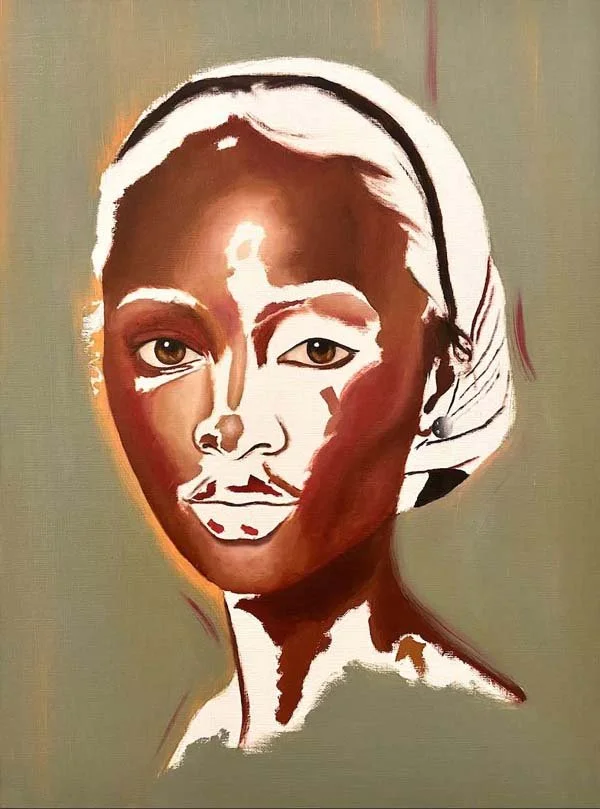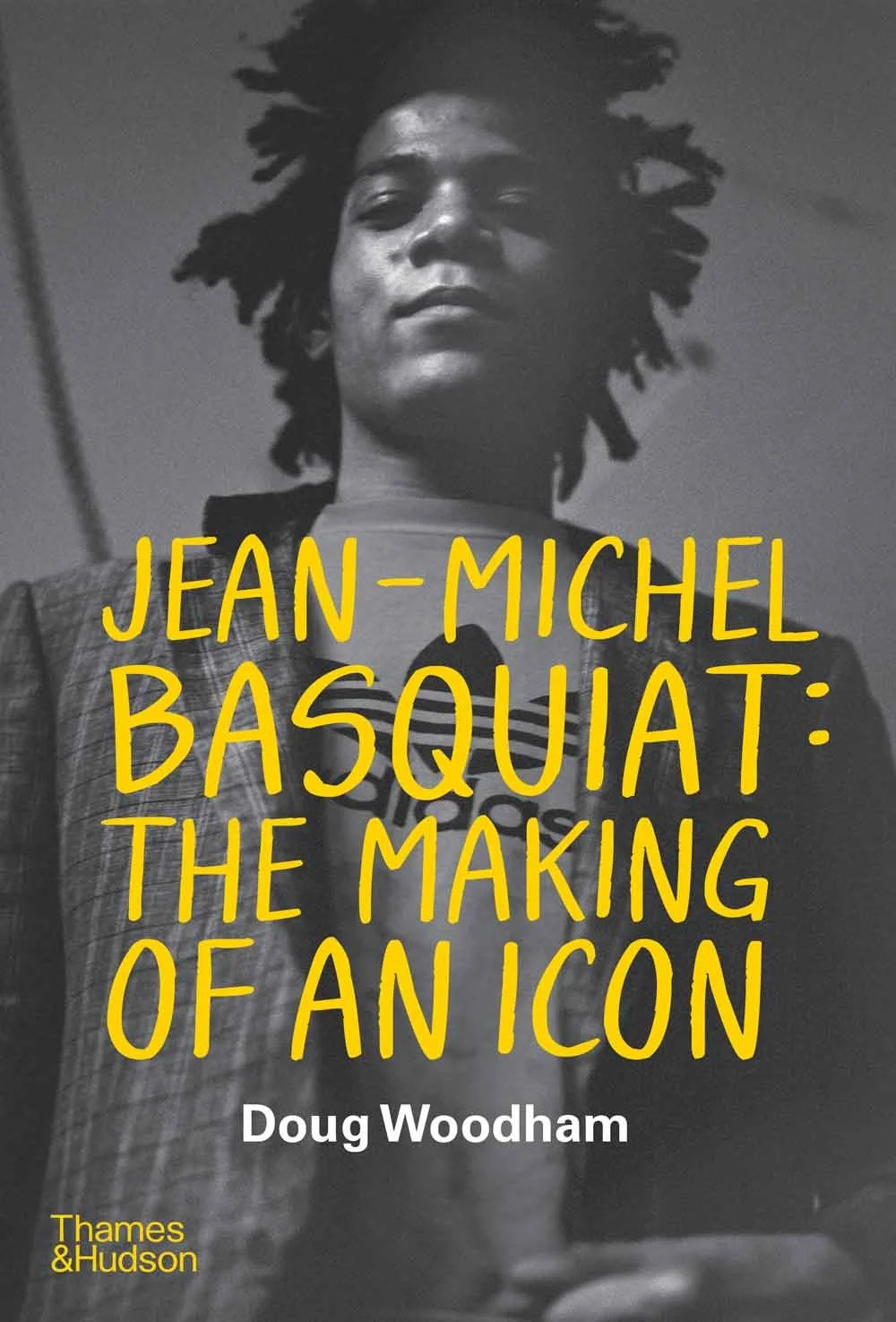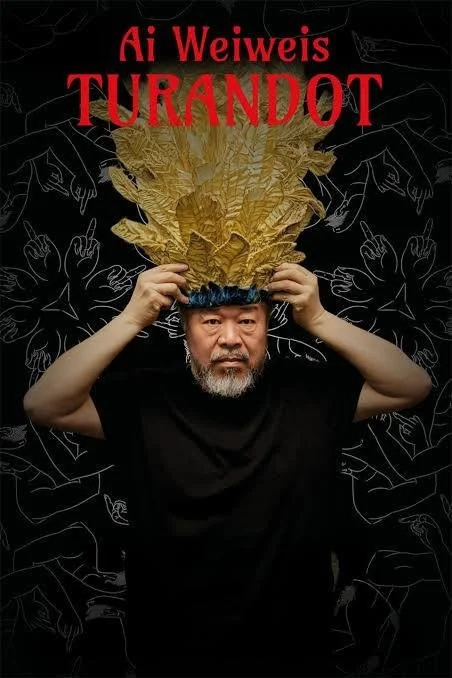Sierra Orosco is a self-taught oil painter based in New York City. A graduate of Marymount Manhattan College with a B.A. in Studio Art and Business Fashion Marketing, she is currently pursuing her M.A. at the New York Academy of Art. Her emotionally charged work explores themes of loneliness, youth, and nostalgia, often using faceless self-portraits to invite viewers into her perspective. Rooted in personal experience, her paintings serve as an expressive outlet, aiming to evoke deep, reflective responses. Through color and introspection, Orosco continues to shape her voice as a contemporary artist. @cc_thevisionary
Where were you born and raised? How did it influence your art and your thinking about the world? I was born and raised in New York City, more specifically, in Brooklyn until middle school, when my mother moved us to the Bronx, where we lived for nine years. Growing up, we didn’t have much, and my mother raised me on her own, but despite the challenges, she worked hard to instill in me the values I needed to become a good, humble, and honest person. My upbringing taught me to look for the best in people and to understand that humanity is complex. Life isn’t just black and white, but there’s a gray area we often choose to ignore, where no one is entirely good or entirely bad. In my work, I’ve always tried to portray people with honesty. Sometimes it’s just a simple moment, but that moment can reveal a deeper truth. Whether it’s something I catch in my subject’s eyes or the complicated dynamics between people.
When did you first fall in love with art and realize you wanted to be an artist? For you, what is the importance of the arts? As a child, I spent a lot of time alone, often drawing characters I loved from my favorite shows, but it wasn’t until high school that I really fell in love with art and began to see it as more than just a hobby. School trips to the Met and MoMA opened my eyes to a different kind of storytelling, one that didn’t rely on words. By the time I was nearing graduation, I realized this was the only path that truly made sense for me. I couldn’t see myself doing anything else. To me, the importance of art lies in its ability to communicate, tell stories, and evoke feelings that words sometimes cannot. Art is its own language. Many artists struggle to express themselves through words, so they use their work to speak for them. It’s then up to the audience to interpret, to feel, and to find their own meaning in it. Throughout history, art has always helped us make sense of the world. It’s preserved forgotten stories, sparked important conversations, and brought people together in times of division. Art doesn’t just reflect the culture, it shapes it, and that’s what makes it essential.
What does your typical day in the studio look like? What kind of atmosphere do you create for yourself when you're painting, and how do you approach each session? A typical day in the studio for me can go one of two ways. If I’m already deep into a project, I’ll come in with my paint already pre-mixed on a palette, ready to go. I’ll set the mood usually with some music playing, then dive right into the work and paint for as long as my energy allows. Once I hit a stopping point, I’ll take a break, check emails, and flip through my sketchbook to workshop new ideas for future pieces. Other days, I let instinct lead. I might set aside everything I’ve been working on to start something completely new if I feel a sudden rush of inspiration. Those moments are unpredictable, but often the most exciting. No matter what kind of day it is, I always give myself one simple goal: make a little bit of progress. Whether it’s refining a detail, testing a new color combination, or sketching out a loose concept. Every small step moves the work forward.
With your thesis work underway, how are your ideas evolving in the studio right now? Are there themes you find yourself returning to again and again? Right now, everything I’m working on is centered around my thesis for my final year at the New York Academy of Art. My focus is on capturing raw, honest moments in the relationships between family, friends, and significant others. I’m interested in those subtle emotional dynamics, things that are often felt but not always said. To bring these scenes to life, I often use myself as the subject, embodying the characters I have in mind to guide the narrative more intentionally. In contrast, I’ve also been exploring a more minimal, interpretive approach through my Undone series. With that body of work, I’m experimenting with breaking down the form leaving elements unfinished or open-ended to invite the viewer to engage more actively, to fill in the blanks themselves. It’s all part of a larger exploration of vulnerability, memory, and the gray areas within human connection.
When someone encounters your work for the first time, what do you hope they walk away with—emotionally, intellectually, or otherwise? What I hope people feel when they experience my art is a sense of clarity, a recognition of something real within the complexity of human relationships. Whether it’s a quiet tension between figures or a vulnerable moment captured in one of my Undone portraits, I want viewers to see the truth that often lives beneath the surface. I’m trying to express the feeling of coming apart, the moments where people are unraveling just a little, but still holding on. These aren’t always grand or dramatic scenes; sometimes, it’s in the stillness or the subtle gestures that the most emotion lives. My hope is that people can find parts of themselves in these moments, and through that, form a deeper connection to the work.
If you had the chance to sit down with any artist from history, who would it be, and what would you want to ask them? I would love to meet either Caravaggio or Auguste Toulmouche. Both were incredible painters whose work I've long admired, especially for their mastery of storytelling through imagery. Caravaggio’s use of light and shadow to heighten drama and emotion is something that continues to inspire me, as well as his ability to capture raw human intensity, feels timeless. Toulmouche, on the other hand, had a more delicate approach, portraying intimate scenes with such elegance and detail. I’m drawn to the way both artists could tell a story without a single word, relying purely on expression, gesture, and composition. That kind of visual language is something I strive for in my own work.
What kinds of media—outside of visual art—do you find yourself turning to when you're in need of creative energy or emotional resonance? I draw a lot of inspiration from my personal life, my relationships, memories, and the emotional experiences that come with them. I’m also deeply influenced by music and film. Certain songs or scenes have a way of hitting something deep, and I often find myself pausing to reflect on the feeling they leave behind. That emotional residue is what I try to translate into my work.
A great thing about living in New York City is…
One of the best things about living in New York City is the access to so many incredible galleries. Being able to visit new shows every week is something I never take for granted. It keeps me inspired, constantly learning, and connected to what other artists are exploring and creating. There’s always something new to discover. It’s such a blessing to be surrounded by that much creative energy.
Has there been a piece you’ve made that pushed you to your limits emotionally or technically—one that still sticks with you? One piece that really challenged me both creatively and emotionally is called Strained, which I created during the height of COVID. In it, I depict multiple versions of myself being pulled apart. My hands appear blank and fragmented, representing the larger forces at play outside of myself. Those forces include society, the art world, and even my own internal pressure to meet expectations or become something I wasn’t ready to be. At the time, I felt boxed in, like all these parts of my life were working together to shape me into a version of myself that didn’t feel true. Creating Strained was a way for me to process that tension. It was uncomfortable but necessary. In pushing through it, I found clarity and began to reclaim the freedom to define my artistic voice on my own terms.
How has mentorship shaped your development as an artist? Who or what do you look to when you're seeking direction or clarity? Attending the New York Academy of Art has given me the opportunity to learn from both my professors and peers providing small moments of insight that have helped shape my growth. That said, in recent years, I haven’t had a single teacher, mentor, or collaborator who’s played a major or ongoing role in my journey. I’ve always been very independent. Much of my development has come through self-directed research, experimentation, and reflection. I’m constantly looking for ways to grow, and that drive often pushes me to explore new techniques, study artists I admire, and refine my voice on my own terms. While I value the community around me, my path has largely been about finding strength and direction from within.
Sustainability in the art world is an important issue. Can you share a memory or reflection about the beauty and wonder of the natural world? How does nature enter into your work or creative mindset? It took me a while to truly connect with nature and recognize its beauty. Growing up in the city, I was always surrounded by concrete, noise, and movement. Nature felt distant, almost unfamiliar. But as I’ve gotten older, I’ve learned to slow down and appreciate it in a much deeper way.
Being in nature feels like such a reset. There’s a stillness that allows me to really hear my inner voice, something that can get lost in the chaos of everyday life. While my work doesn’t always depict nature directly, that sense of quiet and reflection it offers has definitely found its way into my process. It reminds me to be present, to observe more closely, and to create from a place of clarity.
AI is changing everything. With the rise of AI in art and image-making, how do you think about the value of human touch and presence in your own work? I have mixed feelings about AI. On one hand, I recognize that technology is constantly evolving and reshaping how we engage with the world, but as an artist, I also see AI as a growing threat to the creative community. What makes human art so important is the presence of the artist. The emotion, the intention, and the personal history that lives in every brushstroke or decision. AI lacks that. It can mimic style or form, but it doesn’t carry the passion, vulnerability, or lived experience behind the work. Every piece I create is deeply personal. I pour myself into it, my thoughts, my struggles, and my memories. That kind of authenticity can’t be replicated by an algorithm. While AI might be able to generate images, it can’t replicate the human connection that real, handmade art offers. That connection is what makes art timeless and irreplaceable.
Exploring ideas, art, and the creative process connects me to the deepest parts of myself and to others. It allows me to reflect, to question, and to express truths that can’t always be put into words. Through creating, I find clarity, connection, and a sense of freedom in being fully, unapologetically human.




















































































